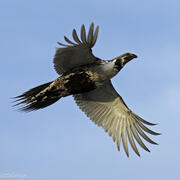Adrian P Monroe, PhD
Adrian Monroe is a research ecologist at the Fort Collins Science Center who broadly studies avian ecology and ecosystems in working landscapes.
I work to meet science needs of natural resource managers and agencies by studying effects of disturbance and management on avian population trends, demographics, and distribution, as well as restoration and ecosystem recovery. I also am interested in using simulation and hierarchical models to understand observation processes, and projecting changes in distribution of species and habitat under future conditions.
Professional Experience
Avian Research Ecologist, U.S. Geological Survey, 2024-Present
Biologist, U.S. Geological Survey, 2023-2024
Ecologist, U.S. Geological Survey, 2020-2023
Research Scientist, Colorado State University, 2016-2020
Postdoctoral Fellow, Colorado State University, 2014-2016
Education and Certifications
Ph.D., Forest Resources, Mississippi State University 2014
M.S., Natural Resource Ecology and Management, Oklahoma State University 2010
B.S., Biology, College of William and Mary 2008













